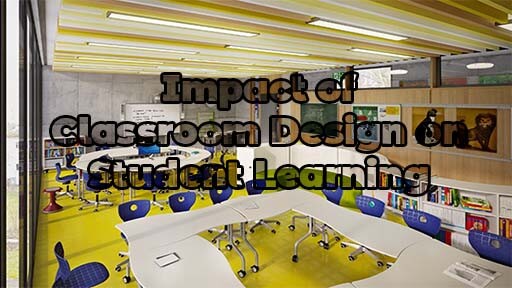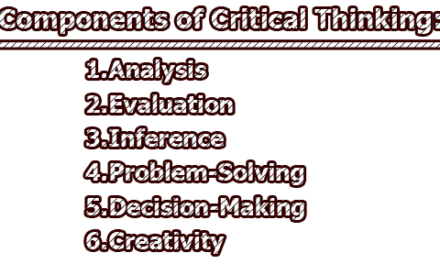Impact of Classroom Design on Student Learning:
Classroom design plays a critical role in enhancing student learning outcomes. Classroom design encompasses a range of elements such as physical space, layout, furniture, color, lighting, and technology that contribute to creating a conducive learning environment. A well-designed classroom can facilitate engagement, promote creativity, foster collaborative learning, and improve academic achievement. In this article, we will examine the impact of classroom design on student learning outcomes and explore best practices for creating effective learning environments.
- Physical Space and Layout: The physical space and layout of a classroom significantly impact the learning experience of students. A well-designed classroom should be spacious, flexible, and adaptable to various learning activities. For instance, classrooms that are designed to support collaborative learning activities should have flexible furniture such as tables and chairs that can be easily rearranged to facilitate group discussions. Additionally, the layout of the classroom should be organized in a way that minimizes distractions and disruptions, enabling students to focus on their learning activities.
Research has shown that classroom design can impact the behavior and engagement of students. A study conducted by the University of Salford’s School of the Built Environment found that classroom design can affect academic performance by as much as 25%. The study evaluated 153 classrooms across 27 schools in the UK and found that classrooms with natural light, comfortable temperatures, and good acoustics had a positive impact on academic performance.
- Color: The use of color in classroom design can influence student behavior, emotions, and cognitive processes. Colors can evoke different emotions and feelings, and different colors can have different effects on learning. For instance, blue is often associated with calmness, while red is linked with excitement and stimulation. The use of color in classroom design should be intentional and purposeful. Research has shown that certain colors can improve learning outcomes. For example, the color green has been found to improve reading ability, while the color red can help with memory retention.
- Furniture: The furniture in a classroom plays an essential role in creating a comfortable and supportive learning environment. Classroom furniture should be ergonomically designed, promoting good posture and reducing discomfort or fatigue. Additionally, furniture should be versatile and flexible, allowing for easy customization to fit different learning activities. Furniture should also be arranged in a way that supports learning activities, such as group discussions, presentations, and independent work.
- Technology: Technology has revolutionized classroom design, providing new opportunities for engagement and collaboration. Classroom design should incorporate technology that enhances student learning outcomes. For instance, interactive whiteboards can facilitate group work, while projectors can support multimedia presentations. Additionally, technology should be integrated in a way that supports student learning and allows for seamless transitions between different learning activities.
Best Practices for Classroom Design:
Creating an effective learning environment requires intentional and purposeful classroom design. Below are some best practices for creating an effective learning environment.
- Incorporate Natural Light: Natural light can improve mood and energy levels, leading to better engagement and focus. Classrooms should be designed with windows and skylights that allow for natural light to enter the space.
- Create Flexible Spaces: Classroom design should be adaptable to various learning activities. Furniture should be easy to move and rearrange, allowing for customization of the space to fit different learning activities.
- Provide Comfortable Furniture: Classroom furniture should be ergonomically designed, promoting good posture and reducing discomfort or fatigue.
- Use Color Strategically: Colors should be purposefully chosen to evoke specific emotions or support specific learning activities.
- Incorporate Technology: Technology should be integrated in a way that supports student learning and allows for seamless transitions between different learning activities.
Classroom design is a critical element in creating an effective learning environment. A well-designed classroom can enhance engagement, promote creativity, foster collaborative learning, and improve academic achievement. Classroom design should be intentional and purposeful, incorporating elements such as natural light, flexible spaces, comfortable furniture, strategic use of color, and technology that supports learning. Research has shown that classroom design can have a significant impact on student behavior, emotions, and cognitive processes. As such, educators and school administrators should prioritize classroom design as a key component of their efforts to improve student learning outcomes. However, it is essential to note that effective classroom design is not a one-size-fits-all approach. Different classrooms and students have varying needs, and classroom design should be adapted to meet those needs. Classroom design should be based on an understanding of the learning goals, the needs of the students, and the teaching methods used in the classroom.
In conclusion, effective classroom design is a necessary element in creating a conducive learning environment. Classroom design should be intentional and purposeful, incorporating elements that promote engagement, creativity, collaboration, and academic achievement. By prioritizing classroom design, educators and school administrators can enhance student learning outcomes and create a positive and supportive learning environment for their students.
References:
- Barrett, P., Zhang, Y., Davies, F., & Barrett, L. (2015). Clever classrooms: Summary report of the HEAD project. The University of Salford. Retrieved from https://www.salford.ac.uk/__data/assets/pdf_file/0011/809134/150520-Clever-Classrooms-Report-DM.pdf
- Hidi, S., & Renninger, K. A. (2006). The four-phase model of interest development. Educational psychologist, 41(2), 111-127.
- Karatas, H., Kose, S., & Talan, T. (2019). The effect of classroom design on students’ perceptions of learning and satisfaction. Educational Research and Reviews, 14(15), 546-553.
- Lippman, P. C., Burns, S., & McArthur, L. (2016). The impact of classroom design on academic engagement. Journal of Facilities Management, 14(1), 5-20.
- Soudijn, M. R., van der Voordt, D. J., & Loomans, M. G. (2018). Effects of classroom design on student learning: A literature review. Building Research & Information, 46(7), 764-777.
- Tanner, K. D. (2012). Promoting student metacognition. CBE-Life Sciences Education, 11(2), 113-120.
- Weinstein, Y., Madan, C. R., & Sumeracki, M. A. (2018). Teaching the science of learning. Cognitive Research: Principles and Implications, 3(1), 25.

Library Lecturer at Nurul Amin Degree College










